Republic Protectorate of Kamino
| The Republic Protectorate of Kamino | |

| |
| Political information | |
| Type of government | Military Stratocracy |
| Head-of-Government | Rex Republica |
| Affiliation | The Resistance |
| Societal information | |
| Territory | Tipoca City, Kamino |
| Language(s) | Galactic Basic |
| Historical Information | |
| Date of establishment | Year 24 Day 134 |
| Status | Active |
| Holosite | n/a |
The Republic Protectorate of Kamino (RPK) is the governing body of Tipoca City on the planet Kamino. The RPK seeks to promote the welfare of Clone War veterans and their descendants, and to ensure the legacy of the Grand Army of the Republic (GAR). As a client state of The Resistance government, the RPK works to further the Rebel cause throughout the galaxy.
History
The Republic Protectorate of Kamino was formed in Year 24 when the clone peoples were given formal control of the city of Tipoca on Kamino, sharing governance of the planet with the native Kaminoans in the name of The Resistance.
The idea of an independent clone state was said to have been formed during the First Galactic Civil War, coming about separately from both the clones themselves and certain Republic (and then Imperial) senators. The clones’ vision sprouted from a desire for freedom, while the senate hoped to quell a postwar wave of unemployed soldiers whose pensions would be owed from an already depleted coffer. An independent state in the outer rim could see the Republic freed of their financial obligations to the veterans and remove the clones from the public eye and consciousness. Fears were growing that should the Republic win the war, the senate might be held accountable for the decision to use the clone army in their fight against the Confederacy; the ethics of which were being deemed unscrupulous by more and more each day. All serious discussion of the clone state, however, was ended with the formation of the Empire and the cancellation of all contracts with the clones. With no senate to appeal to, and the public eager to put the war behind them, the veteran’s demands for property and restitution fell on deaf ears and localized uprisings of decommissioned clones were summarily put down. The care of clone veterans fell to local benevolent groups and mutual aid societies.
The Reformed Grand Army
In Year 18 the Ternion Corps, an advocacy group for Clone War veterans and their families, partnered with sympathetic cloning scientists to resume the birthing of clones using the original Kaminoan template in an effort to educate the galaxy and keep the legacy of the Grand Army of the Republic alive. With the original veterans quickly aging, the groups’ leaders agreed that maintaining a steady rate of gestating cylinders was the only way to preserve their presence in the galaxy. Public education about the clones’ service and fate, and marshaling public support for the clones to be given a home, was the groups’ stated intent, but the establishment of the Reformed Grand Army as a military force also showed that they were dedicated to winning their home and dignity by any means necessary from the Empire that had discarded them.
Towards the end of that year, the Reformed Grand Army had established a garrison on the outer rim world of Vinsoth, a world that had played a pivotal role in ending the First Galactic Civil War. Rather than a permanent home, the Corps had leased land from the planetary authorities with an agreement that the clones would offer their services for defense and logistical assistance in lieu of payment. Despite some initial mistrust between the two parties, the Vinsoth Garrison proved a success and the funds raised by sympathetic governments and individuals were invested back into developing the Reformed Grand Army and in searching for a permanent home.
Development of Quantxi
Almost immediately after the conclusion of Galaxy Festival in Y21 The Grandest Fester, first place winner of Gal Fest, bequeathed the moon he had won to the Ternion Corps. No reason was given other than, “You guys look like you could use a place to stay.” The moon Quantxi provided a home for its members and their families, providing safe haven from the prejudices of the wider galaxy. On Y22 D100, representatives from a majority of the Corps units signed the Protocols of Protection and Unity, the governing documents for the Republic Protectorate.
The Protectorate worked for a standard year to transform the junkyard planetoid into a modern military installation. Over that time, however, Imperial Union forces expanded their foothold and began fortifying the Bright Jewel system. Unwilling to launch a campaign while so distant from allies, one that would undoubtedly result in Quantxi's destruction, the Protectorate turned to master Con Semper of the Altisian Jedi Order and honorary commander of the Corps. Semper helped broker a deal with mandalorian warrior and honorary major Kaze Zill for an undisclosed sum to buy the moon and the Protectorate left Quantxi on Y23 D256, leaving Quantxi under Zill's command.
Settlement in Austan
Again without a home, the clones took to several Colossal-class cruisers and a small but growing fleet of Clone War era ships recovered from the junk moon and other salvage they had recovered or bought from neighboring systems. From there, Governor General Rex Republica led his people with Jedi guidance from the Altisian Order to the southern regions under Rebel control. Paul Luz made the introductions between Ternion Corps and The Resistance, himself having been a longtime supporter of the Corps and at the time the head of Kamino Medical Laboratories, a Resistance-backed corporation. After weeks of negotiations, the clones took on work from The Resistance and were left to bring the system of Austan into compliance with its government’s standards. The system was largely undeveloped, and the clones quickly began the difficult work of fortifying the system, bringing order through standardized law enforcement and legislation, building public infrastructure systems, and facilitating immigration and resettlement efforts on behalf of The Resistance.
The clones of the Prime Template quickly became a common sight in the region, but it took time for the locals to warm to their new protectors. Being a backwater system, the warfare following the New Republic’s collapse hadn’t affected Austan as much directly, but the effect on public trust was substantial. General Republica worked diligently to earn the public’s trust and demonstrate that the clones were there to serve and develop, not to occupy. It took several months, but eventually the civilian workforce joined with the clones to tackle the assigned projects.
Collaboration with Kamino
Ternion’s attention was not just on the Austan system, however. For the clones of Ternion, this was as close as many of them had ever gotten to the original home of the Republic's clone army. Kamino, however, was one of the most secured worlds under Resistance control due to the sensitive nature of Kamino Medical’s bacta refinement facilities and the presence of the Resistance’s own military cloning program. Access by non-Resistance personnel, even allies, was unlikely. Instead, General Republica and the Altisian Jedi organized joint military exercises between the Ternion clone units and the clones produced on Kamino by The Resistance. Several different exercises over a series of months opened the door to closer and more trusting relationships between the two organizations. With the relationship between the clones and the Resistance warming, master Con Semper suggested a demonstration of good faith. Ternion’s scientists had been tediously working to restore and stabilize the original “prime” clone template used to create the first Grand Army. Semper suggested that they donate a copy of that template back to the Resistance’s current cloning efforts on Kamino to help refine the clone specimens there. The researchers at Kamino Cloning Labs gratefully accepted the template at a ceremony on Kamino on Year 24 Day 21 followed by an announcement that the two cloning labs would begin a data-sharing relationship and work closer together in their projects.
Formalization of the Republic Protectorate of Kamino[1]
After a few more months of joint exercises and collaboration on cloning programs, General Crueya Vandron of The Resistance arranged a meeting with General Republica. General Vandron and Resistance Command had been approached by the Kaminoans, who though naturally a more private and isolated people, had been finding their partnership with Ternion’s researchers very productive. General Vandron told General Republica that the Kaminoans had indicated their openness to expanding their partnership further in light of the projected growth in their own cloning operations, and officially extended the invitation for clone soldiers of Ternion Corps to make a permanent home for themselves on Kamino. General Republica accepted the invitation, gladly pledging to continue the development work in the Austan system as well as on Kamino, and reaffirmed their commitment to the goals and ideals the two organizations shared. On Y24 Day 134, agreements were signed and formalized to form the Republic Protectorate of Kamino.
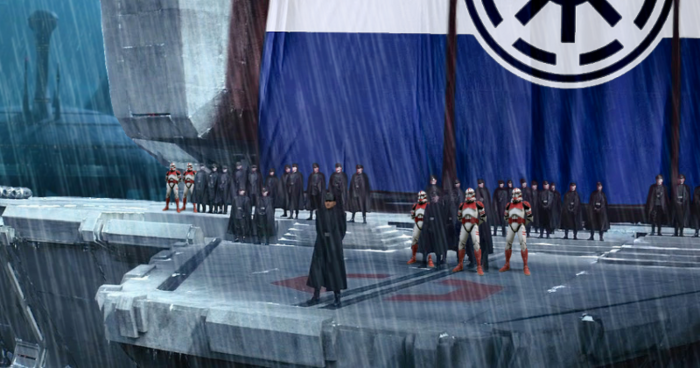
| |
| Rex Republica announcing the formalization of the RPK |
System of Government
The Republic Protectorate of Kamino is a stratocracy, adapting the structure of the Grand Army of the Republic for self-governance. It is governed by a Governor General, who is elected every five years. The Governor general presides over a War Cabinet, composed of representatives from each of the four departments of the Protectorate: the Reformed Army of the Republic, the Protectorate Strategic Command, the Protectorate Research Command, the Protectorate Diplomatic Command. The War Cabinet membership is chosen by the Governor General from the senior leadership of each department. The Governor General and their cabinet is charged with the direct supervision and administration of the Protectorate within the bounds of the Protocols and Protectorate law. Each of the four departments is structured as a military unit as needed, with regiments, companies, squads, and their respective officers. The government is composed entirely of clones and works exclusively for the betterment and welfare of Clone Wars veterans, clones, and their descendants.
War Cabinet
The current War Cabinet consists of:
Governor General: Rex Republica
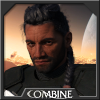
|
Supreme Commander of the RAR: Winner Ryx

|
Strategic General: Zed Nar
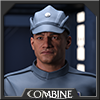
|
Research General: Cap Pinu

|
Diplomatic General: Dak Etho
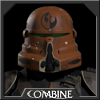
|
Organization
Reformed Army of the Republic: While the entirety of the RPK is a military organization, the Reformed Army of the Republic (RAR) are those citizens who are directly responsible for the immediate defense of the Protectorate's interests and the tip of the spear for its military endeavors. All citizens are required to serve at least three years on active martial duty in the RAR, symbolic of the duration of the First Galactic Civil War. Basic education, medical care, law enforcement, and job training are performed by the RAR, as all citizens regardless of occupation are regarded as members of the military.
Protectorate Strategic Command:
The Protectorate Strategic Command is responsible for the procurement, transportation, and maintenance of all material necessary for the life and defense of the Protectorate. It oversees mining and refinement of ores and bacta, production of ships and equipment, and the maintenance of power grids, shield systems, and food and water production. Strategic Command also launches salvage operations and procures and restores Clone Wars era technology and ships.
Protectorate Research Command:
The Protectorate Research Command is responsible for the protectorate’s specialized academies and research facilities, ensuring the Protectorate can keep pace with the wider galaxy. In addition to development of new technologies and astronavigation, it manages the archives where histories of the clones, their service, and subsequent experience are assembled and preserved.
Protectorate Diplomatic Command:
The Protectorate Diplomatic Command are those trained to nurture relations between the Protectorate and other governments and groups, with a special interest in ensuring the dignity and quality of life of the descendants of the GAR across the galaxy, and the elimination of slavery and exploitation. Diplomatic Command officials also manage the trade and economic policies as they pertain to outside organizations.
Mission and Culture
The Last Campaign
The soldiers of the RPK see themselves on a 'Last Campaign' of the Clone Wars, this time not to defeat an external threat but to rescue their people and heritage. They believe the Grand Army of the Republic to have been the finest fighting force ever assembled, and hope that by its reformation and perfection, the highest ideals of the Republic might be established, defended, and offered to all in need.
The “Last Campaign” the Protectorate has embarked on has three missions:
One: Identifying all surviving members of the GAR and their descendants. Once identified they are offered a place within the RPK or connected with the nearest unit of the Ternion Corps. Their family and service history is recorded and any artifacts preserved. This mission also includes the acquisition and restoration of any and all available ships, vehicles, or equipment from the era. Where those identified are unable or unwilling to join or relocate, the Protectorate will lobby their government to ensure their welfare and security.
Two: Honoring the Legacy of the GAR. Because the GAR was decommissioned over a period two decades following the war and the formation of the Galactic Empire, much of its history has been lost, obscured, or disputed. The Protectorate hopes to assemble and preserve the most detailed and accurate history of the war and its soldiers and promote the truth of that period of history to the galaxy. Beyond publications and conferences, the Protectorate sponsors living history events and exhibits where denizens of the galaxy can meet clones and encounter the ships, vehicles, and equipment that once defended democracy across the galaxy. This mission also includes the establishment and maintenance of various monuments, historical markers, and celebrations at sites significant to the war and those who served.
Three: Reforming and Perfecting the Grand Army of the Republic. To complete any of its objectives, the Protectorate must have a standing force even larger than the GAR at its peak. To accomplish this, the Protectorate works with galaxy-renowned cloning scientists to produce legions of fresh clones from surviving genetic samples. Work is always ongoing to locate, repair, and preserve genetic samples of survivors and their descendants, along with research to ensure the viability and stability of the Grand Army for generations to come. This mission also encompasses the manufacturing necessary to feed, clothe, train, and arm the clones for their chosen life of service.
Culture and Traditions
The RPK settlement on Kamino represents the unity and diversity of the developing clone culture. New generations of clones are still grown and referred to as “tank borns.” This is something those clones are quite proud of. The renewed relationship with the Kaminoans means that the cloning method has transitioned to the traditional Kaminoan style and away from the Arkanian spaarti cylinders previously used by the Ternion Corps. The Kaminoan method ensures higher quality, better health, but takes significantly longer than other cloning procedures. This has caused the number of tank-born clones to decrease. Cloning, however, is not the only way citizens are born to the RPK. Clones are free to produce families the natural way with offworld partners and spouses, and these families are permitted to live in the clone settlement on Kamino.

| |
| Clone life and culture under the RPK. |
Because of its origin in the GAR, the RPK has a highly militarized culture. Military education and combat training is woven into the basic education curriculum. Some of these threads were inherited by the Mandalorian training the original clones received, and so even clones born in the current era will see challenges in life as “battles” to be fought and overcome. Clone culture is ordered by a strict chain of command that reflects age, rank, and skill level. Being compliant and obedient to the chain of command is seen by the clones as the bedrock of their society.
A strong source of cultural cohesion for the clones is the flash training process, a system of instilling skills and values into clones during their infancy and childhood. This training is coded with messages and images designed to interface with the clone mind. As a result, at a young age the clones will develop unique mannerisms, phrases, and customs that bind them together. Even non tank-born clone children undergo a classroom based version of this training during their schooling to ensure cohesion with the greater Protectorate society.
The first five generations of Ternion-produced clones received additional training from Mandalorian warrior instructors of the Aliit Vhetin, but once a sufficient number of clone instructors had been trained and certified they took over the education and training process. Nevertheless, trace elements of Mandalorian and even Kaminoan culture are still present within clone society alongside organically-developed, clone-centric aspects.
Holidays
Victory Day: Celebrated on day 55 each year, Victory Day commemorates the assassination of the Separatist leaders on Vinsoth and the beginning of the Battle of Binquaros, the last official battle of the First Galactic Civil War. While the mood of the day is celebratory, there are often more somber remembrances as the day aligns with Empire Day, which marks the end of the Galactic Republic.
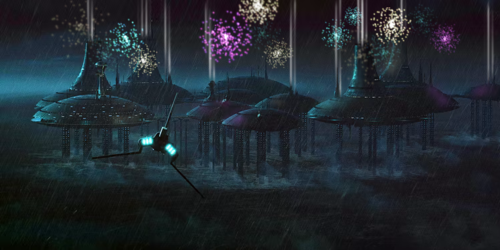
| |
| Celebrations on Kamino |
Founding Day: Founding Day, observed on Day 134, celebrates the founding of the Republic Protectorate of Kamino and the return of the clones to their ancestral homeworld. It is celebrated with parades, speeches, airshows, and parties.
Birthing Days: Because clones are birthed in batches, clones often gather with those in their “batch” or “class” to celebrate their birthdays together. Descendents of clones also gather together on the Birthing Day of their clone ancestor, if it is known. A general Birthing Day is observed on day 95 each year, marking the approximate day Bodo Baas rediscovered Kamino and the clone army.
Remembrance Day: Observed on day 335 of each year, Remembrance Day started as a day of mourning and remembering the clone soldiers who have died in combat. Day 335 was chosen as it marks the anniversary of the end of the disastrous Af’el campaign where nearly the entire 5th Fleet was lost due to negligent leadership and disregard for clone life. In recent years, Remembrance Day has taken on additional significance, also remembering the clones who died in poverty and isolation from their brothers following their decommissioning.
Notable Partnerships
While the Republic Protectorate of Kamino is led exclusively by clones, the Protectorate maintains a close relationship with the Altisian Jedi Order, who serve as an advisory body. Several of the Altisians such as Con Semper and Paul Luz use their knowledge and experience to help further the cloning technology and genetic research vital to the RPK's misson. Other members, like Vir Calder, help fund different aspects of the Protectorate's mission and aid the clone diplomats in building relationships throughout the galaxy. Given the disastrous role Jedi played in the Clone Wars, support for the Altisians is not unanimous within the Protectorate, and the Jedi are not privy to all the aspects of the Protectorate's work. This said, both the current War Council and the Altisian Order work daily to build trust and atone for the sins of the past.
The Protectorate also maintains close relationships with Kamino Cloning Laboratories and The Resistance.